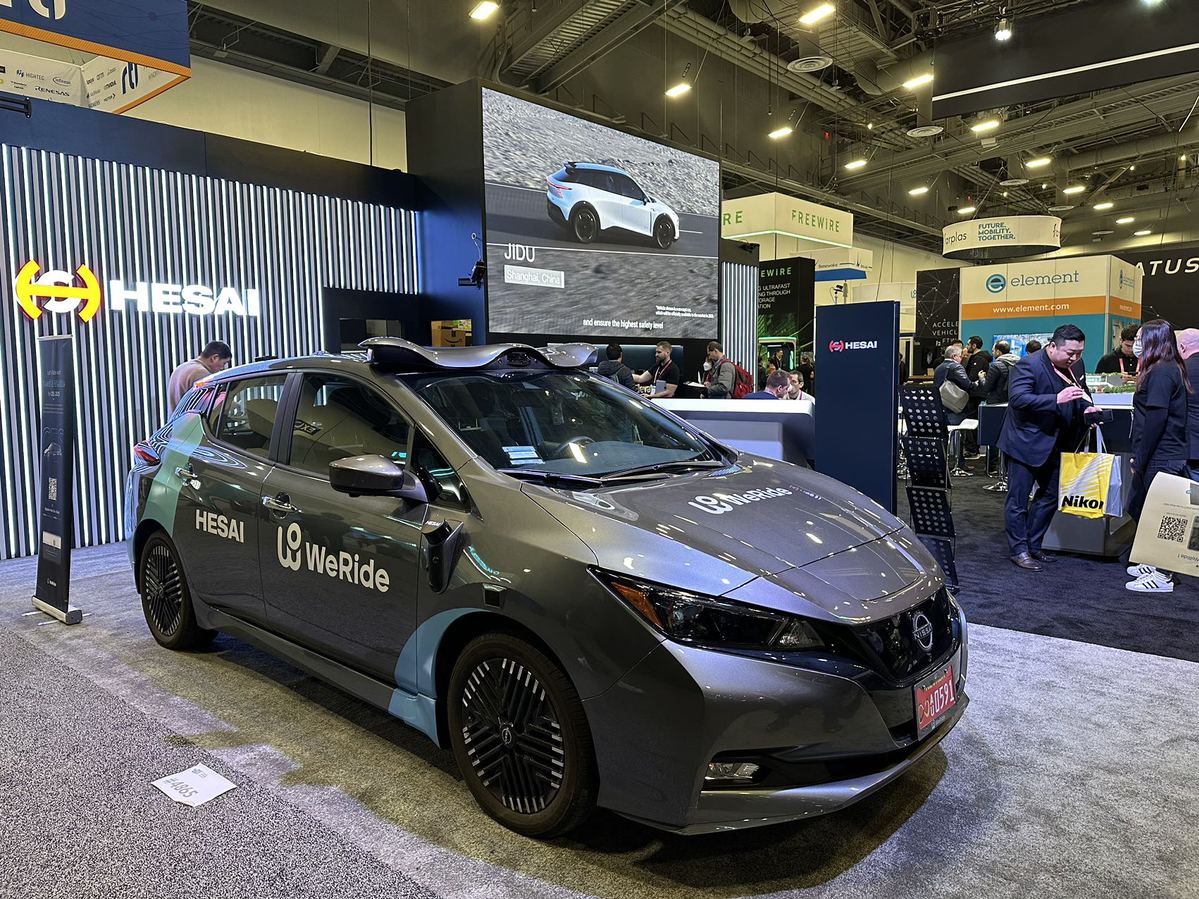Chinese companies lead in LiDAR tech

Fully autonomous consumer cars may not be far off as more cars capable of high driving automation are on the road with the advance of a key technology called LiDAR.
The technology will make driving safer and smarter, and it will realize mass production in near future, according to a few Chinese LiDAR companies at CES on Thursday.
LiDAR, which stands for light detection and ranging, is a sensor technology that detects objects and maps their distances so it can create a map of the environment around it.
Honda and BMW and some other automotive companies have announced the imminent availability of Level 3 option.
Among the different levels of autonomy, Level 3 means conditional automated driving with the human driver ready to take over once summoned.
Level 4 means high driving automation, and Level 5 is fully automated driving.
LiDAR makes that possible, and Chinese LiDAR technologies dominate the global market.
Hesai, a major LiDAR company, debuted its latest fully solid-state LiDAR product FT120 at CES. To accommodate the challenges that autonomous vehicles face within their perception system, Hesai has developed the full solid-state FT120 for near-range blind-spot coverage.
Designed as a blind-spot detection sensor for Advanced Driver Assistance Systems (ADAS), the FT120 helps vehicles accurately identify small objects while turning, passing and parking, and improves overall driving safety in tough scenarios.
The FT120 has a 100 degree by 75-degree ultrawide field of view (FOV). Its maximum detection range is 100 meters. Data rate per second is 192,000 points (in single return mode) and overall resolution is 160 (H) x 120 (V), according to the company.
Compared with cameras, LiDAR provides better perception capabilities and therefore more safety to drivers, said Su Yu, marketing director of Hesai.
"For instance, cameras are affected by light and do not work well at night, but LiDAR does depend on light," she told China Daily.
Together with its long-range hybrid solid-state LiDAR AT128, Hesai said the two sensors form a complete automotive grade LiDAR perception solution.
Hesai witnessed quick growth in 2022, with 100,000 lifetime LiDAR units delivered in December. It has established partnerships in the US, with companies such as Nvidia, Zoox, and Nuro.
As for 2023, Hesai's new Maxwell intelligent manufacturing center will begin operation in Shanghai this summer. It will enhance mass production and delivery capabilities to over a million units per year by 2025, said Su.
"We have received pre-orders of FT120 with 1 million units from top automotive OEMs and will begin deliveries in the second half of 2023," Su told China Daily at CES.
Hesai and WeRide, an autonomous-driving technology company, partnered to showcase a Level 3 autonomous driving vehicle with WeRide's new sensor suite SS 5.1 at this year's CES.
The SS 5.1 is designed for Level 2 and Level 3 autonomous driving applications. Based on multiple sensor sets, SS 5.1 provides a 360-degree field of view with a front detection range of up to 200 meters. This sensor suite also can be adapted to L4 autonomous driving.
WeRide has formed a strategic partnership with Bosch, the top Tier 1 vendor for automotive OEMs, to co-develop advanced Level 2 and Level 3 autonomous driving products, which are set to launch this year.
As ADAS and autonomous-driving technology advance, the sensor requirements and system architecture need to evolve to address the needs of the industry, the companies said.
RoboSense, a Shenzhen-based LiDAR company, presented the new E1 solid-state LiDAR for short range and M Series for long range.
E1 will be mass produced in the second half of 2023. It will support partners to further improve their smart vehicles' all-scenario perception capability, according to the company.
In the US market, RoboSense has supplied LiDAR products to Lucid Motors and is committed to building up more partnerships, Zhao Peipei, president of RoboSense, told China Daily.
"So far, we have set up offices in Detroit and San Jose. Our next step is to localize our business in the US and transform the mode to "Designed in China and Made in the US,'" said Zhao.
Su said her company is also committed to the US market. "In terms of ADAS, the US is the second-largest market next to China," she said. "We are currently in talks with several US clients. Hopefully we'll have good news this year."
liazhu@chinadailyusa.com

